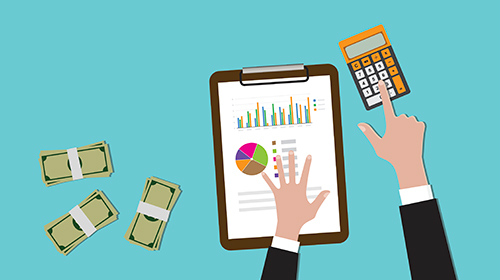
An enterprise’s assets can be divided into two categories: tangible assets – including buildings, machinery, equipment, cash and office supplies; and intangible assets – that lack physical existence and are fruits of a company’s creative and innovative talents.
For many enterprises intangible assets have become more valuable than their tangible assets, and are key to their success. They create a basis for enhancing the company’s value.
IP assets are legally protected and that protection can be enforced in a court of law. They can be independently identified, are transferrable, and have an economic lifespan. Depending on the nature of your intangible assets, you are offered different legal instruments by which you may protect and ultimately benefit from using them. IP protection and management should be a key element of your business strategy.
It is important to understand the economic value of your IP assets by carrying out an IP valuation. Having an idea of how much your assets may be worth will be helpful for various transactions including licensing, sale, donation of IP rights or entering into joint ventures and other collaborative arrangements.

The value of an IP asset essentially comes from the right the owner of that asset has to exclude competitors from using it. For an IP asset to have a quantifiable value it should:
The value of an IP asset represents the potential future economic benefits to the IP owner or authorized user. Value can be derived through:
IP valuation is a process to determine the monetary value of IP assets.

In order to be able sell, license or enter into any commercial arrangements based on IP, you need to be able to put a value on an IP asset. IP valuation is also beneficial in the enforcement of IP rights, for internal management of IP assets, and for various financial processes.
To be able to value an IP asset, the asset should meet the following conditions:
Expert tip
Care should be taken on the difference between the price and the value of an IP asset. Price is typically defined as what a buyer is willing to pay, in an arms-length transaction, based in the perceived value of the product. Value is an abstract, but deterministic quantity whose calculation is based upon an orderly tested set of methods and rules.

If you want to use IP assets as collateral to obtain financing, you stand a greater chance of success if your assets can be valued separately from your business. In this case it is important to show that the IP assets will remain valid, at least for the duration of the financing repayment period. They should also remain marketable in the event of foreclosure or bankruptcy.

Before investing in a company, venture capitalists need to know the value of that company's IP. Proper valuation of IP assets can therefore help win over such potential investors, who tend to look for maximal return and minimal risk. In addition, if you're considering a joint venture, strategic alliance, merger or acquisition, IP valuation can assist in understanding how much value the IP assets of all parties contribute to the partnership.

Having a thorough understanding of your IP assets before you enter into negotiations on licensing will help ensure that you are able to make more informed decisions on the terms and conditions of the licensing agreement. Knowing your IP assets will also assist you in determining fair royalty rates. In franchising too, both franchisor and franchisee need a thorough understanding of the value of IP assets.

Knowing the value of an IP asset can influence your decision about what strategy to employ if that asset is infringed upon. Through IP valuation you will be better able to decide whether to pursue the court route, to opt for alternative dispute resolution, or even whether to consider licensing the asset to the infringing party. IP valuation also plays an important role in calculating damages.
The principal methods for valuing IP assets are:
The income method is the most commonly used method for IP valuation. It values the IP asset on the basis of the amount of economic income that it is expected to generate, adjusted to its present day value. This method is easiest to use for IP assets with positive cash flows, for those whose cash flows can be estimated with some degree of reliability for future periods, and where a proxy for risk can be used to obtain discount rates.
The market method is based on a comparison with the actual price paid for the transfer of rights to a similar IP asset under comparable circumstances. This method has the advantage of being simple and based on market information, so it is often used to establish approximate values for use in determining royalty rates, tax, and inputs for the income method.
The cost method establishes the value of an IP asset by calculating the cost of a similar (or exact) IP asset. The cost method is particularly useful when the IP asset can be easily reproduced and when the economic benefits of the asset cannot be accurately quantified. This method does not account for wasted costs, nor does it consider any unique or novel characteristics of the asset.
Regardless of the method used, the valuation process requires gathering much information about the IP asset, as well as an in-depth understanding of the economy, industry, and specific business that directly affect its value. This information can be obtained by conducting an event-driven IP audit, as well as background research.